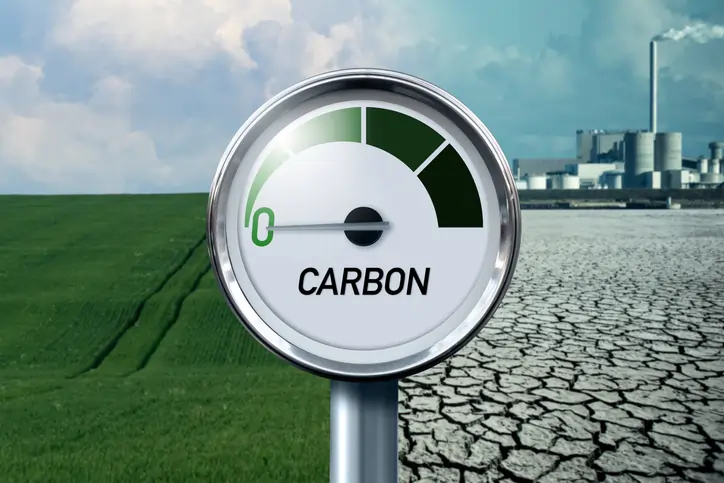

Jean-Philippe Hiegel, Head of Strategy & Growth at RepAir Carbon
By Jean-Philippe Hiegel, Head of Strategy & Growth at RepAir Carbon
We just saw the latest reports – 2023 had the highest carbon emissions in history. After decades of talking about reduction, we’re still not getting it done, and we’re making it worse. With analysis suggesting that a Trump victory could add 4 billion tonnes of US emissions by 2030 – equivalent to the combined annual emissions of the EU and Japan – and likely end hopes of keeping warming below 1.5°C, the challenge is no longer about developing new technologies to capture carbon from the air – it’s about scaling them up fast enough to make a real difference.
This reality is precisely why the concept of Direct Air Capture (DAC) hubs holds so much potential. I think of them as complete ecosystems that bring together everything needed to actually remove carbon dioxide from the atmosphere at scale: the companies developing capture technologies, the operators who can safely and permanently store the CO2 underground, the renewable energy suppliers and all the shared infrastructure that makes it economically viable. Without this kind of integration, we risk having promising technologies that never reach meaningful scale at the required speed.
Why we need DAC hubs now
The timing is critical. Just three years ago, we had only a handful of DAC startups globally. Today there are almost a hundred of them. This explosion of innovation is exciting, but it also means we need to find smart ways to organise the community and accelerate deployment. We can’t afford to have each company trying to build everything from scratch.
Here’s a concrete example: today, if a storage operator drills one well into a saline aquifer, the expected injectivity is between 1 to 2 million tons of CO2 per year. But most DAC technology companies are still working with pilots that capture hundreds or thousands of tons. This gap is precisely what DAC hubs help solve – by letting multiple companies share expensive infrastructure like pipelines and compressors, we can bridge this scale gap much faster than any single company could do alone.
Inside a DAC Hub: making integration work
Let’s take a look at how this works in practice. A DAC hub facilitates the deployment of complete value chains from capture to permanent storage. It’s a place where we can find all the various elements that actually make direct air capture work at scale. Yet it’s not commonplace globally.
The best examples are in North America. The US Department of Energy has awarded $3.5 billion in funding to advance different Regional DAC hubs spread across the country, testing various technologies and concepts – different end products (storage, utilisation), different utility supplies like nuclear power, renewable power, waste heat. Meanwhile in Canada, Deep Sky is attempting something even more ambitious: combining the equivalent of all US DAC hubs into one massive project, initially designed as a test centre to identify the most suitable technologies in the Canadian set-up. It’s a fascinating contrast in approaches.
The real value comes from how these hubs bridge critical infrastructure gaps. When a storage operator develops projects at the megaton level, they need facilities that can handle millions of tons of CO2 yearly. By sharing essential infrastructure – pipelines, compressors and treatment units – we make this scale of operation accessible to smaller players who couldn’t afford these investments alone.
The synergies go beyond basic infrastructure. All DAC players require power, so shared electrical transformers and connections create significant efficiencies. Some technologies require water, others heat. You could even have interesting combinations – some DAC technologies produce water while capturing CO2, while others require water input. This creates opportunities for symbiosis between the technologies themselves.
Solving the hard problems to go from concept to reality
But I have to be clear about the challenges we need to solve. The commercial model must be well-defined. Today across the landscape of DAC startups, some players want to own and operate facilities and sell credits on the market. Others just want to sell their units to project developers. Some take a hybrid approach. The more players you put in the picture, the more complex it becomes to sort out the commercial terms and conditions.
Looking ahead five years, and depending on the new government, we might see progress in the US as those hubs move from feasibility to development and execution. Canada will likely focus on making their single large hub successful and replicate the concept. In Europe, we’re trying to put this model in motion in France. Denmark could be another candidate since they’re the first country in Europe to licence onshore CO2 storage permits. Asia will follow, but probably with a 5-10 year lag.
The key now is turning this potential into reality. The blueprint exists: we see it in the US model of combining funding for hub development with direct procurement of carbon credits – an approach that provides both infrastructure support and guaranteed revenue streams. What we need is coordinated action from governments to accelerate deployment: streamlined permitting, public engagement, and clear policy frameworks that recognize DAC hubs as critical climate infrastructure.
With emissions at historic highs and hundreds of promising carbon capture technologies emerging, we are at a crossroads. We can either watch these innovations struggle individually to reach meaningful scale, or we can build the collaborative infrastructure that enables them to succeed together. DAC hubs offer an attractive model for achieving the gigaton-scale carbon removal we desperately need. The technology is ready. The companies are ready. The question is: are we ready to match the scale of the climate crisis with the scale of our response?


